The best TVs for sound: from Sony, Panasonic, Hisense and more
The best TVs for sound offer theater-style audio without adding any extra devices
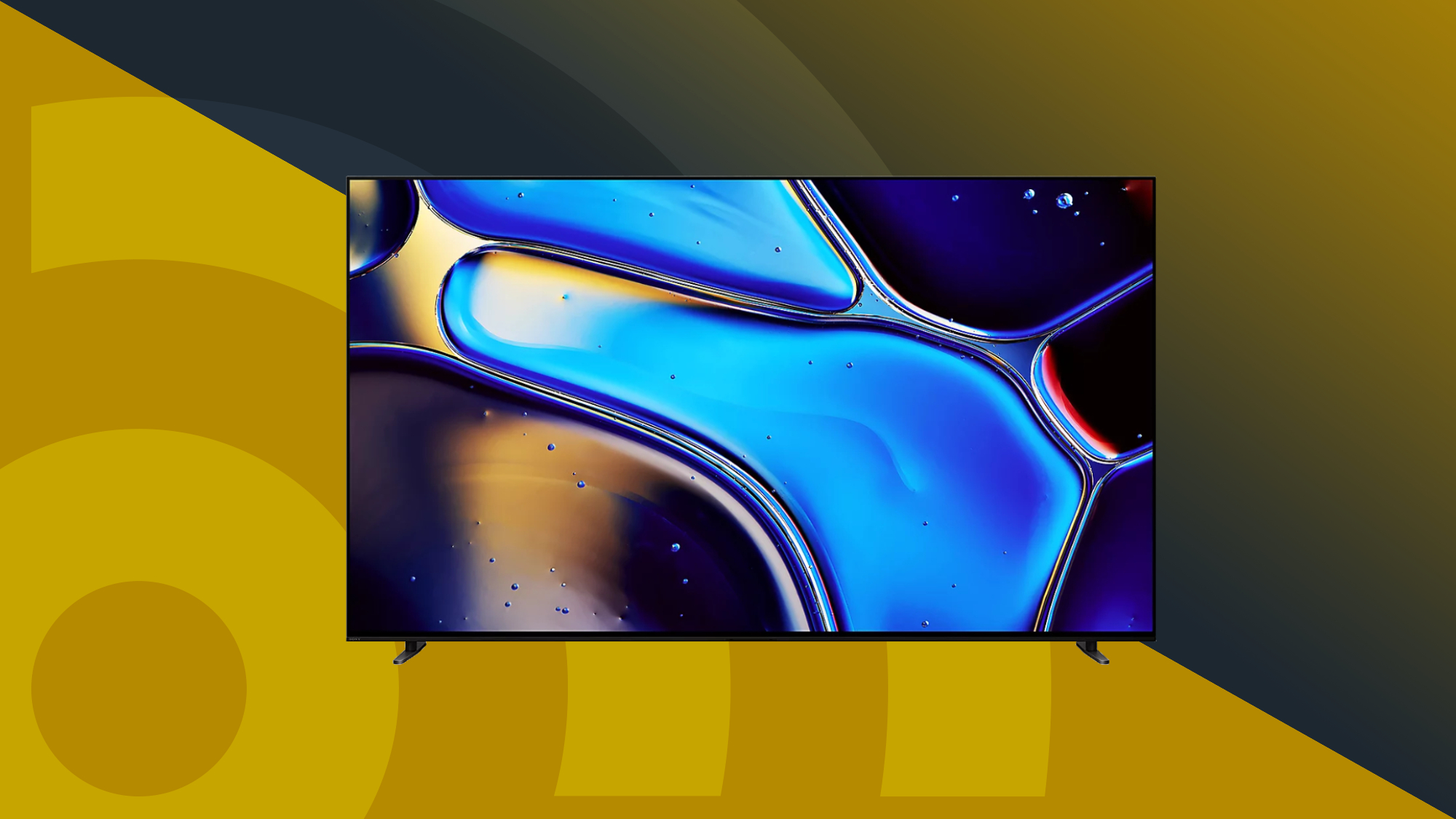
The best TVs for sound deliver great picture quality and dynamic, room-filling sound to go with it. Although it might seem like as the picture performance of TVs advances, sound tends to suffer, there are a few excellent TVs on the market with a built-in sound system that'll blow you away.
As TVs have gotten thinner over the years, there is less space in the display’s physical frame for adding speakers. The end result—in some cases—has been sound that’s as thin as the TV itself. This makes hearing voices particularly difficult, especially when they are mixed with music soundtracks and movie sound effects.
So, even with many of the best TVs you can buy today, we highly recommend you invest in one of the best soundbars or the best surround sound systems. Of course, we also understand that going down that route requires more research—checking you have enough space and the right connections—and extra budget.
If you're looking to hit two targets with one arrow, however, know that there are also options for you. There are several TVs on the market that come with superb sound systems as standard, allowing you to get good sound quality with no extra gear or work necessary.
We've tested hundreds of TVs over the years, so we know what makes a great package. Rest assured, each of the TV displays on our list don't just sound good, they look fantastic and have much of the best TV tech built-in too. Whether it’s a Hollywood blockbuster or just back episodes of Friends, the TVs we've selected below will make sure that whatever you’re watching sounds as good as it can.
Best TVs for sound: Quick List

The best TV for sound overall
Delivering clear, powerful and immersive built-in sound with realistic Dolby Atmos reproduction and significant upgrades, this is easily the best-sounding TV around.
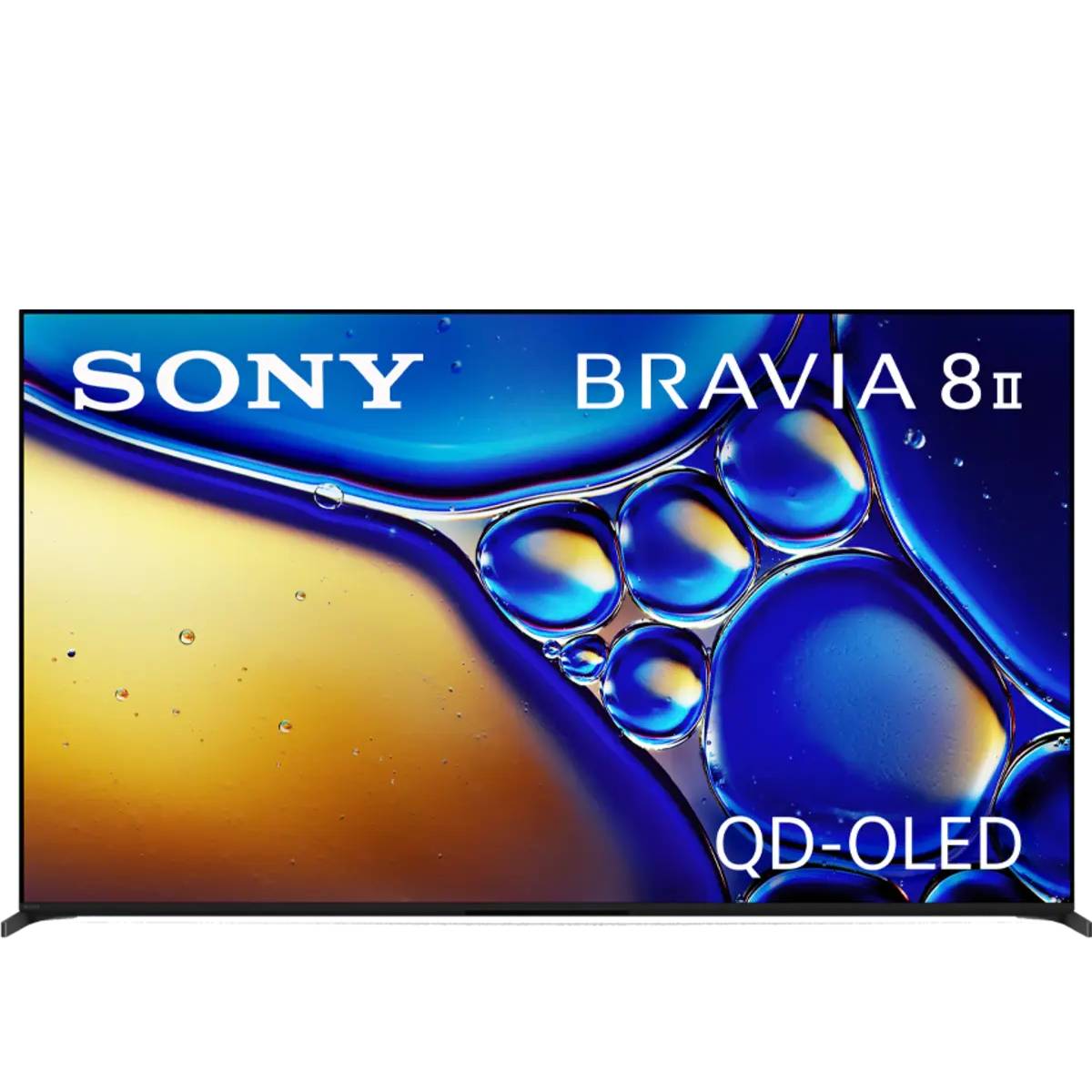
The best mid-range OLED TV for sound
Thanks to Sony's screen-as-speaker tech, expect full and robust sound that feels far bigger than its slim frame. A standout mid-range OLED for built-in audio.
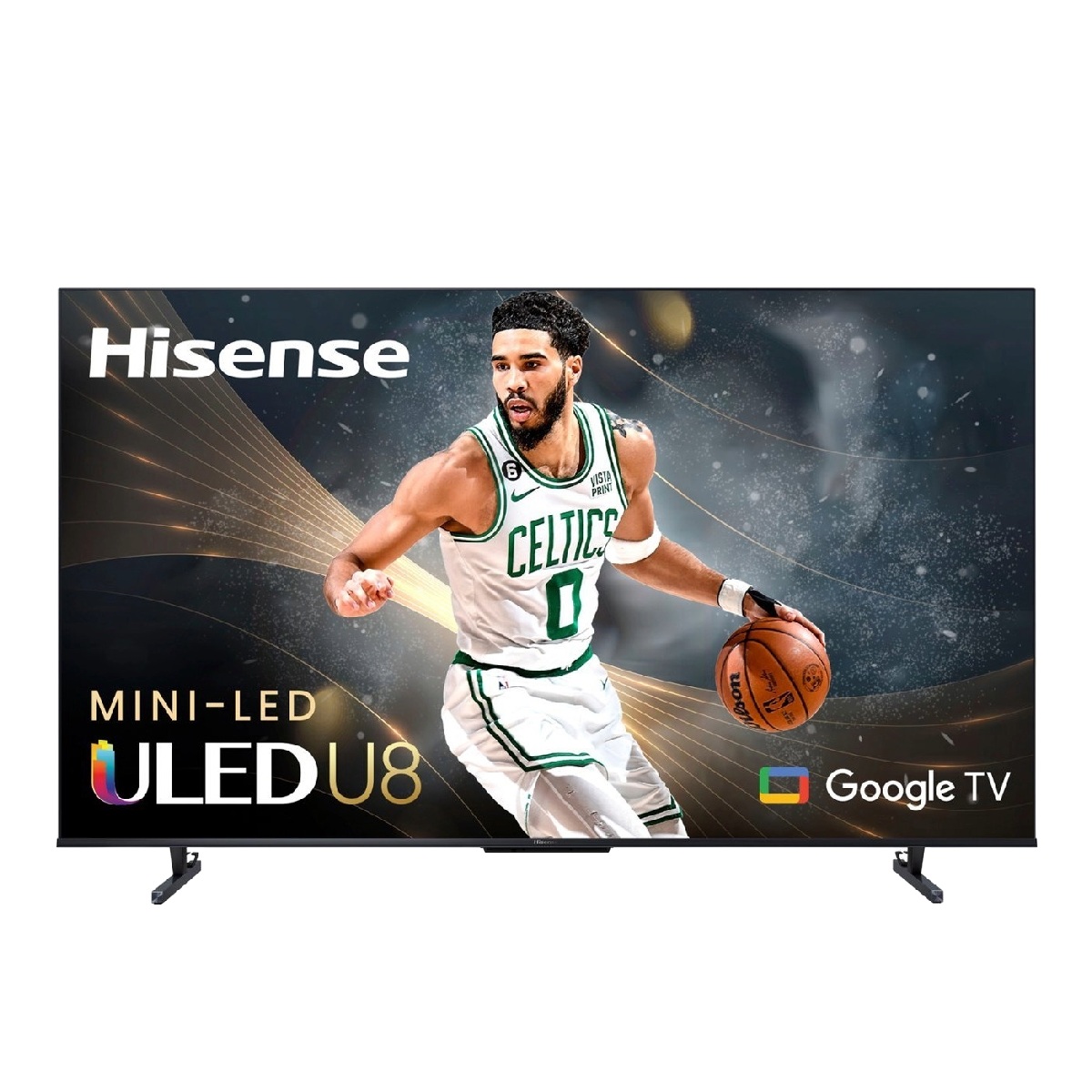
The best mid-range mini-LED TV for sound
Outperforming its superb value price, the Hisense U8N delivers surprisingly accurate and vivid sound in a category that often falters when it comes to built-in audio.
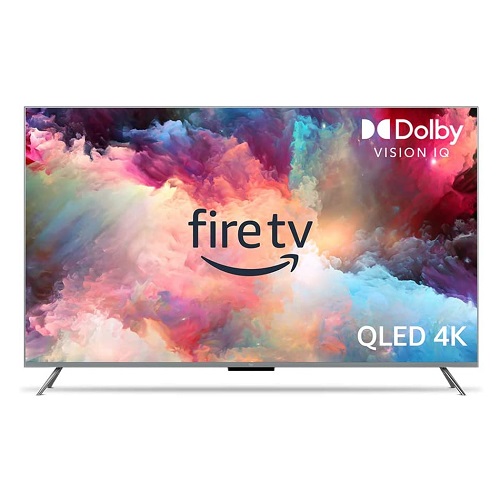
The best budget TV for sound in the UK
Clear, direct and punchy, the Amazon Fire TV Omni QLED takes a no-frills approach to its built-in sound. Not the most immersive, but does the job well at a budget price.
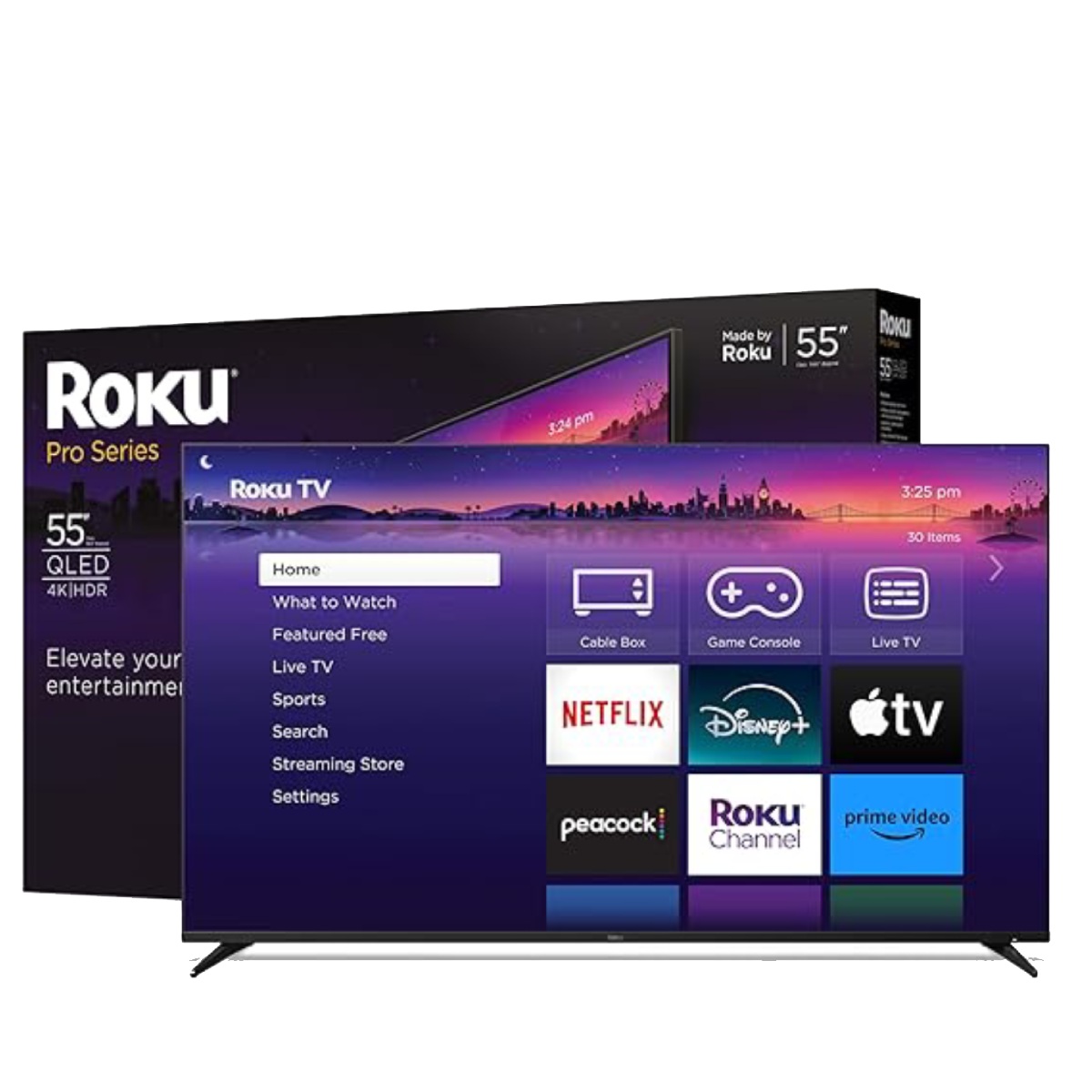
The best budget TV for sound in the US
Front-firing speakers deliver clear, full-bodied sound, and the TV can also be paired with Roku wireless subwoofers and surround speakers for even more immersive sound. An excellent overall value.
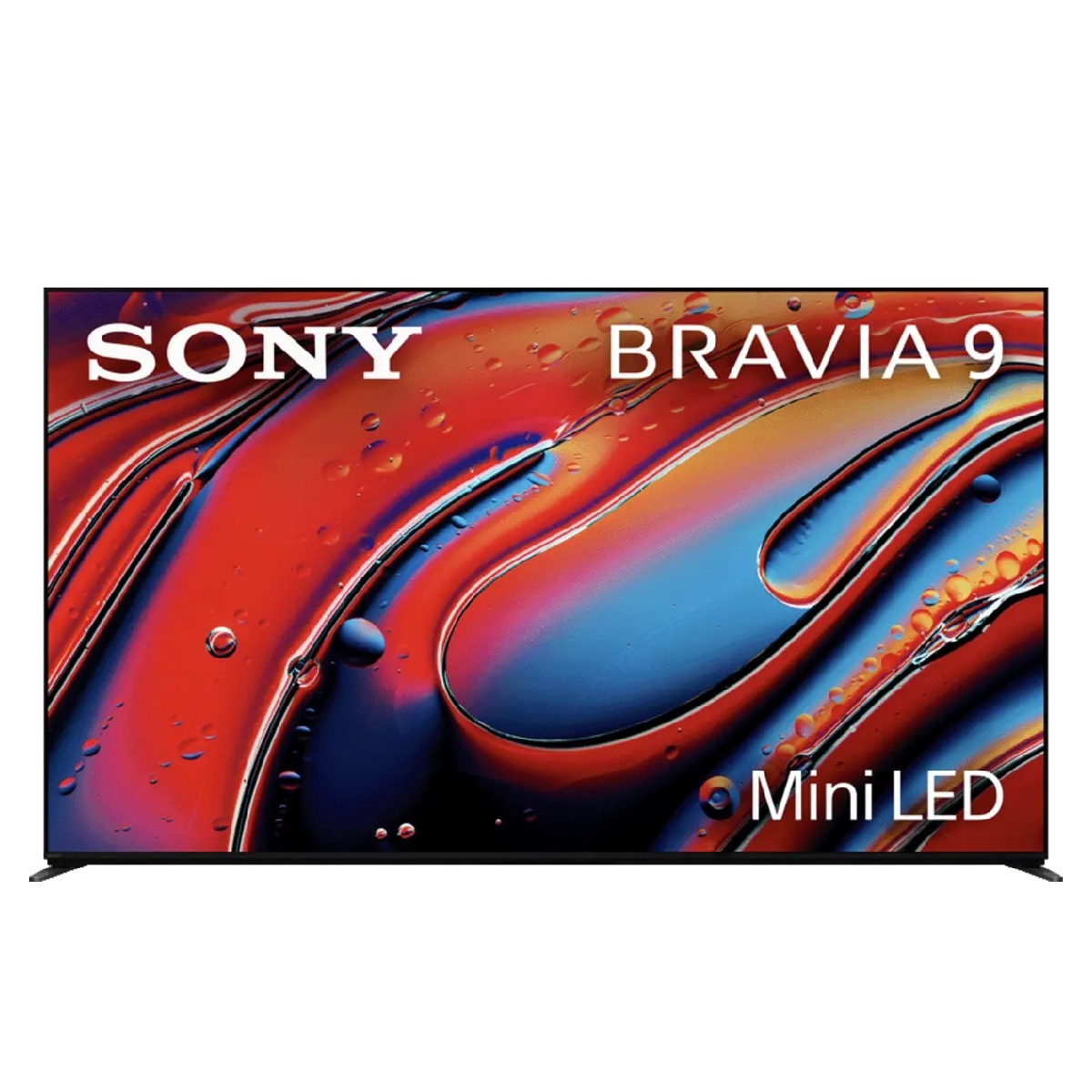
The best premium mini-LED TV for sound
Stacked with audio features and delivering impressive audio performance, there aren't any mini-LED TVs that can beat the rich sound here – but you'll pay a high price for it.
The best TVs for sound you can buy
Why you can trust TechRadar
The best TV for sound overall
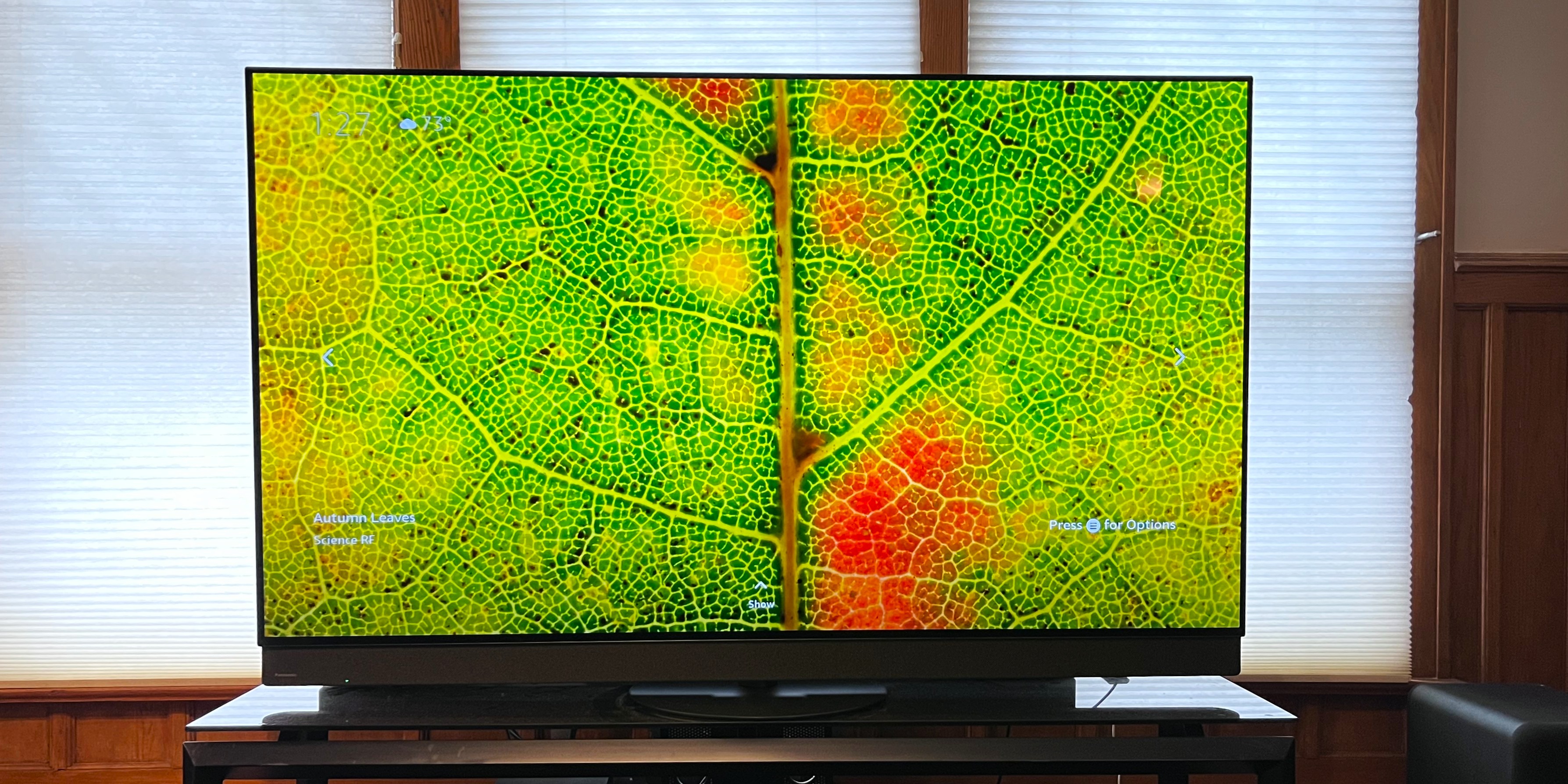
Specifications
Reasons to buy
Reasons to avoid
✅ You want a top-tier TV for movies: With its beautifully balanced color, accuracy and cinematic polish, the Z95B makes films look fantastic.
✅ You want to skip the soundbar: All TVs in this guide sound good, but thanks to its powerful 5.1.2-channel audio system, we're confident most people won't need extra speakers.
❌ You don't want to dim the lights: The Z95B can get bright, but its most accurate modes are tuned for darker spaces and anti-reflection handling isn't the best.
❌ You don't like diving into menus: There are lots of picture and audio settings here that could do with fine-tuning for the best performance.
The Panasonic Z95B is a premium OLED that delivers outstanding sound and picture in one package – which is no easy feat. It has a built-in 5.1.2-channel speaker system that’s one of the most powerful you’ll find on a TV. The result is clear dialogue, punchy bass and immersive Dolby Atmos effects. It’s detailed, dynamic and spacious enough that most people won’t need a soundbar.
Panasonic has also upgraded the speakers for this latest version, improving the driver layout and bass output, and the results show. Sound placement is accurate across the screen, height effects register convincingly, and the system can go loud with losing clarity. Features like Space Tune, which calibrates audio to your room, and Sound Focus, which lets you aim sound toward off-center seating, make it adaptable.
Picture quality is just as impressive. The new four-stack OLED panel delivers high peak brightness for an OLED, excellent contrast and natural color. Panasonic still priorities accuracy over sheer output, but HDR movies look refined and richly detailed, with smooth motion and superb shadow handling. It’s not quite as bright as the top OLEDs, but it’s consistently cinematic.
It runs on Fire TV, which isn’t the best smart platform but it’s fully featured, responsive and works well for Prime Video users. Gaming performance is strong too, with 4K 144Hz, Dolby Vision gaming and VRR support, through HDMI 2.1 ports are limited to two.
The Z95B sits at the higher end of the price scale, but its picture accuracy and class-leading built-in sound justify the premium. If you want an OLED that delivers a truly cinematic experience straight out of the box, no soundbar required, it’s one of the best options you can buy.
Read our full Panasonic Z95B review
The best mid-range OLED TV for sound
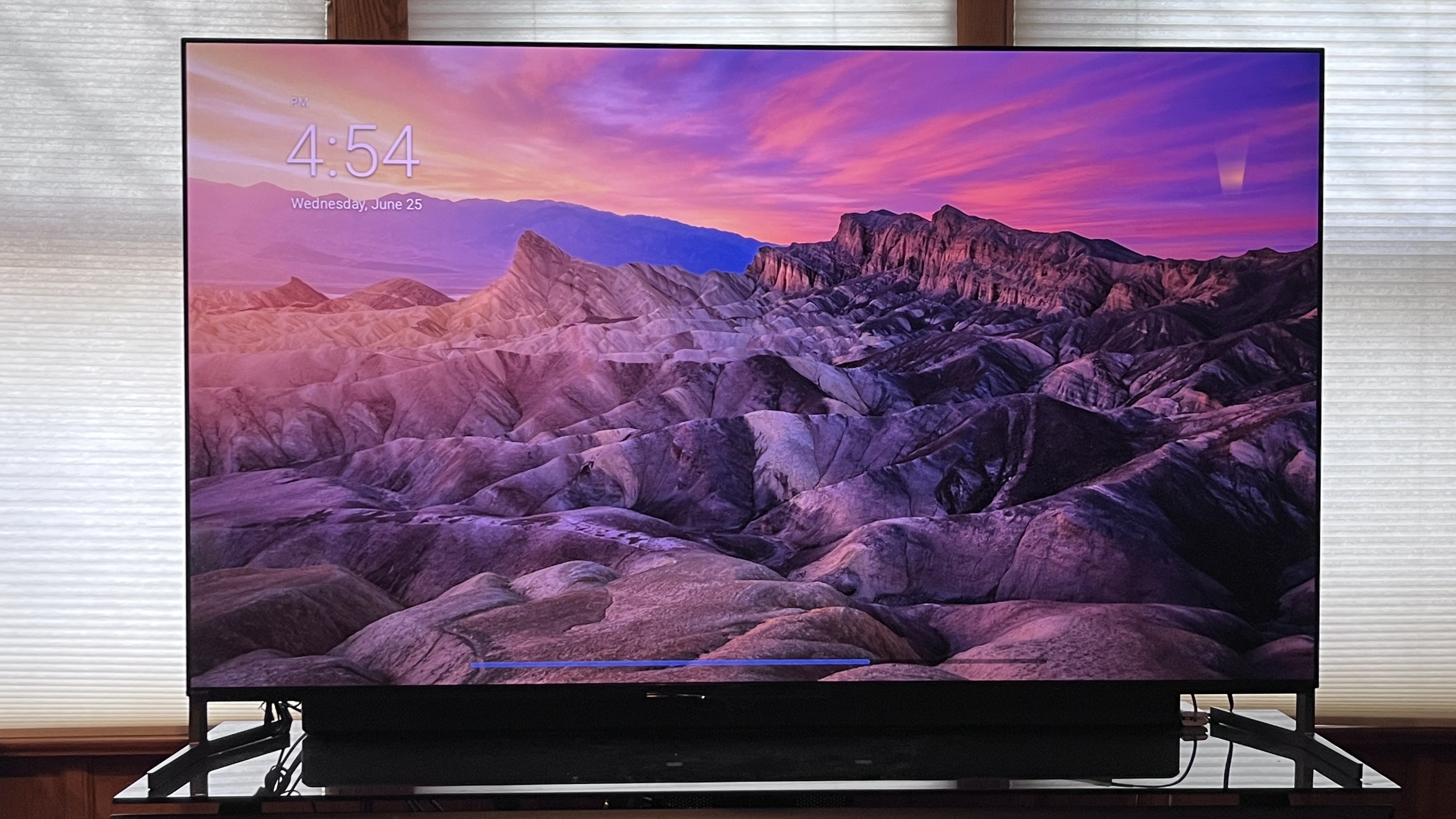
Specifications
Reasons to buy
Reasons to avoid
✅ You want a great TV for films: It delivers excellent picture quality and 4K movies look stunning, whether streaming or on a Blu-ray disc.
✅ You own a Sony soundbar or speakers: When used with a Sony soundbar or wireless speakers, the Bravia 8 II’s Acoustic Center Sync feature lets the TV’s built-in audio system be used as a center channel speaker.
❌ You want the brightest OLED TV you can buy: The Bravia 8 II’s picture brightness is strong for an OLED, but premium and mini-LED models still offer more punch and better reflection handling.
❌ You want a gaming TV: Gaming performance is good here, but there are only two HDMI 2.1 ports and it misses the cloud gaming options available from rivals.
The Sony Bravia 8 II delivers some of the best built-in sound you’ll find on a mid-range OLED. Its Acoustic Surface Audio+ system uses actuators behind the screen to create sound through the panel itself, giving dialogue and effects an impressive sense of placement and accuracy. It goes surprisingly loud without distortion, and overall feels more immersive than the typical TV speaker setup.
Sound gets even better if you do want to pair it with a compatible Sony soundbar. With Sony’s Acoustic Center Sync, the Bravia 8 II acts as the center channel in a Sony surround system, anchoring voices to the screen and adding real depth. In testing, the Bravia 8 II’s audio consistently impressed. Action scenes had precise directionality, ambient effects wrapped naturally around the screen and even with bass limitations compared to a dedicated subwoofer, it outperforms most TVs in this price range.
Its picture performance is similarly strong. You get the excellent contrast and rich colors you’d expect from an OLED, plus Sony’s processing, which sharpens textures and keeps motion controlled. Brightness is improved over last year’s model, giving highlights more punch, though it still sits below the brightest LG and Samsung models.
Gaming support is good, but not great. The Bravia 8 II has 4K 120Hz, VRR and ALLM on two HDMI 2.1 ports, and PS5 owners benefit from Auto HDR Tone Mapping and Auto Genre Picture Mode. Input lag isn’t class-leading but it’s fast enough for most players.
It only isn’t number one because Panasonic’s Z95B offers more immersive sound overall, and brighter OLED rivals give you extra headroom for daytime viewing. But if you want an OLED with genuinely impressive built-in audio, and don’t want to rely on a soundbar, the Bravia 8 II is one of the best balance options out there.
Read our full Sony Bravia 8 II review
The best mid-range mini-LED TV for sound
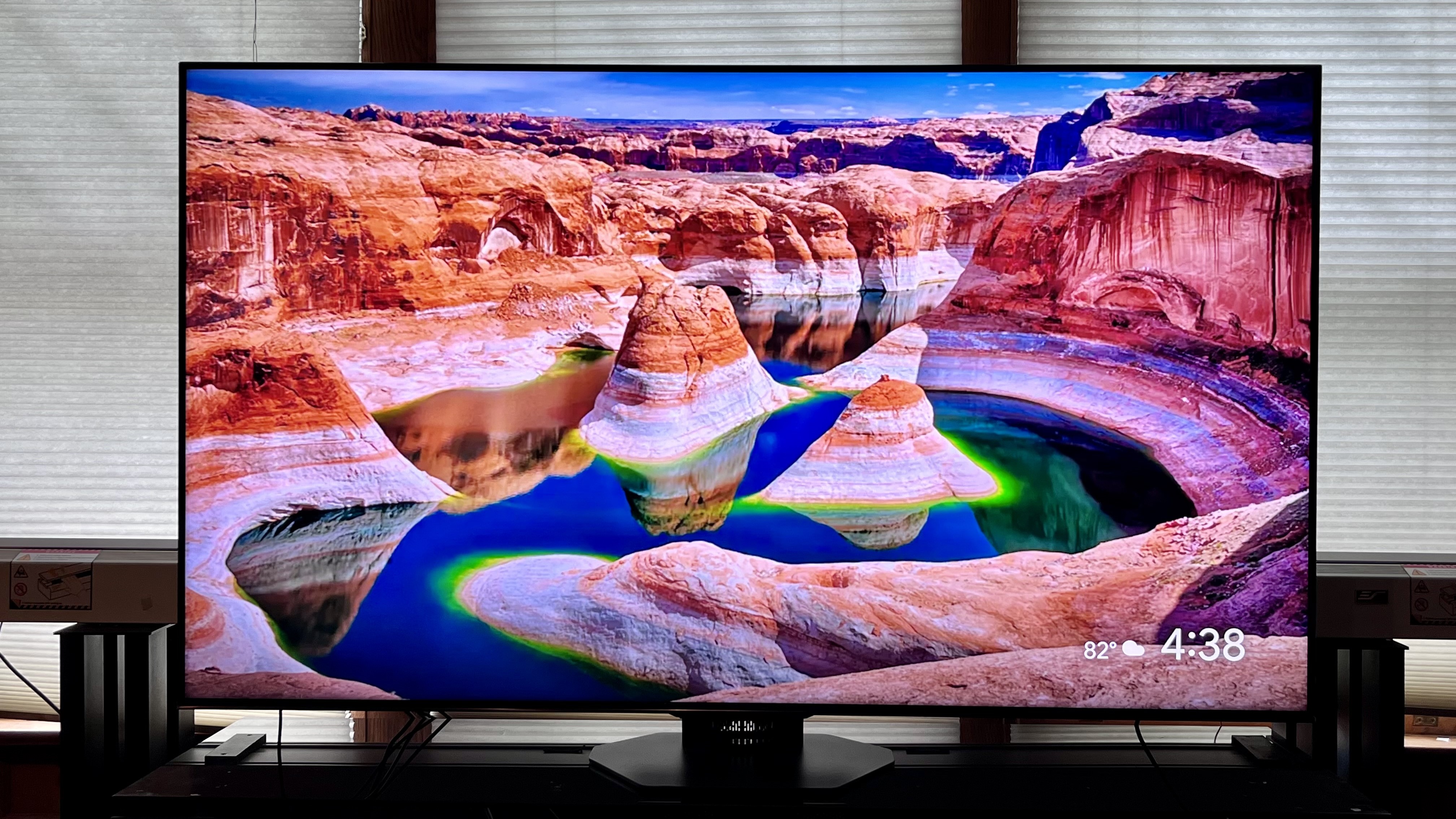
Specifications
Reasons to buy
Reasons to avoid
✅ You want a super-bright TV: Using a powerful mini-LED backlight, the U8N picture brightness exceeds most other TVs on this list.
✅ You’re on a budget: Despite its high brightness and impressive overall picture and sound quality, the U8N is among the more affordable TVs in this guide.
❌ You want a TV that looks great from all angles: The U8N’s picture contrast and color saturation quickly fades when it’s viewed from far off-center seats, making it less optimal for viewing with large groups.
❌You want the best TV for gaming: The U8N’s gaming performance and features are average at best. If you’re looking for the best possible TV for gaming, you’ll want to look elsewhere.
The Hisense U8N is a high-value TV that uses mini-LED backlight technology to deliver bright images with bold colors. It’s available in screen sizes ranging from 55 to 85 inches and has built-in 2.1.2-channel speakers with Dolby Atmos and DTS:X support. While it doesn’t provide the same extensive level of sound features as the Panasonic Z95A and Sony Bravia 8 in this list, it offers much better than average sound quality, and even includes a built-in 'subwoofer' to enhance bass.
In our Hisense U8N review, we said of the TV’s sound quality that “dialogue was clear and full, and the built-in subwoofer made bass effects sound surprisingly weighty.” The TV’s two up-firing speakers also created an impressive sense of height when watching movies with Dolby Atmos soundtracks. We normally recommend adding a soundbar to a TV, but the U8N could easily go without one and still deliver sound that will satisfy most people.
Outside of its sound, the Hisense U8N is one of the brightest sets we’ve tested yet, and that capability plus its low-reflection screen make it a great option for both daytime TV and sports viewing. It uses the Google TV smart TV platform for streaming in the US (and Hisense’s own VIDAA smart TV platform in the UK and Australia) and supports Dolby Vision, HDR10+, and HLG high dynamic range formats. Gaming features include two HDMI 2.1 ports with support for 4K 120Hz, VRR up to 144Hz (including FreeSync Premium Pro), ALLM, and Dolby Vision 4K gaming.
The Hisense U8N is an exceptional value and it improves on the last year's Hisense U8K – our previous mid-range pick – in almost every way, including sound quality. It even has an Auto Acoustic Tuning feature that uses the remote’s mic to adapt the sound to your viewing space. The U8N is a great choice if you have a tight budget and don’t want to spring for a soundbar when buying a big TV.
Read our full Hisense U8N review
The best budget TV for sound in the UK
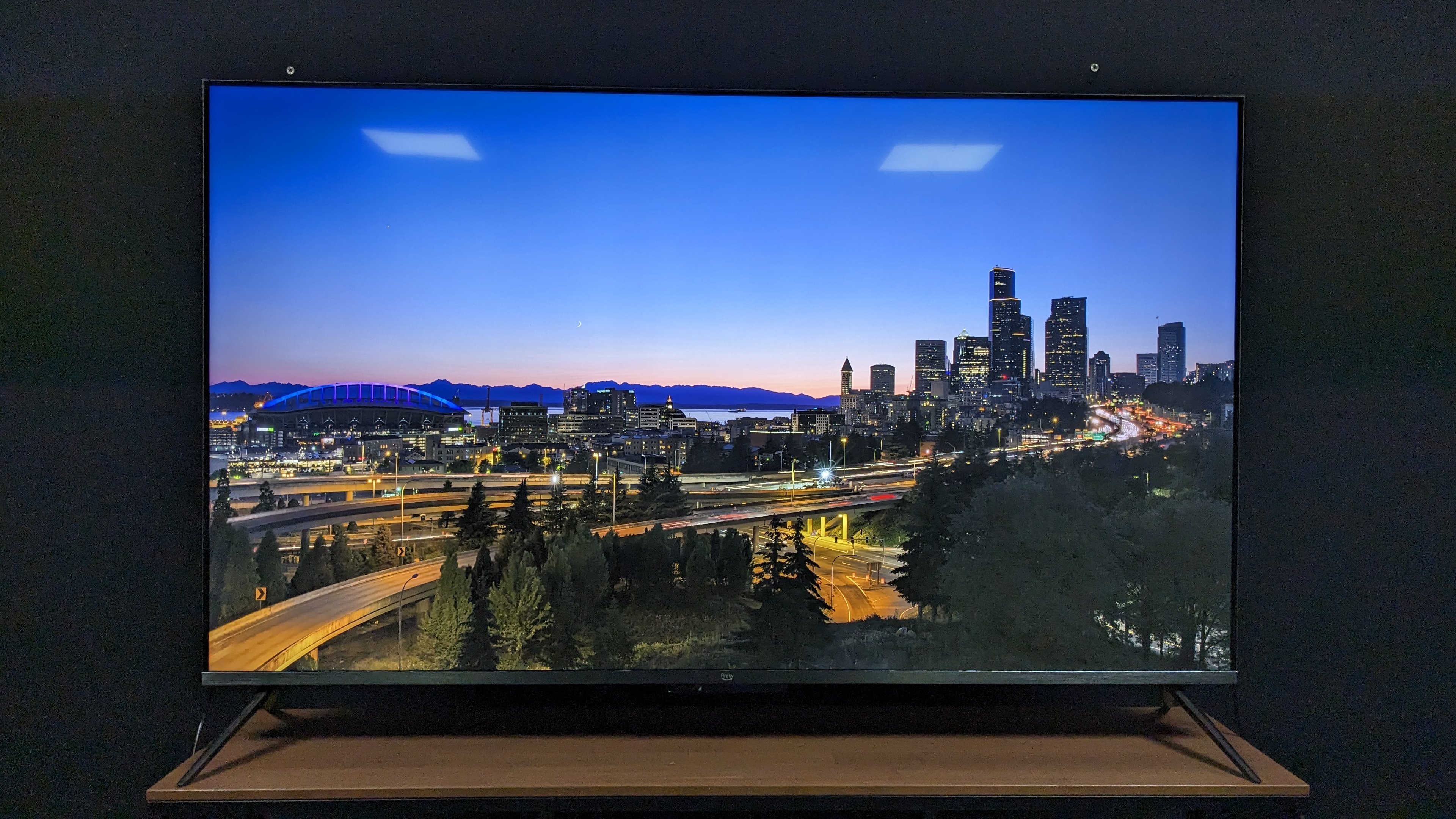
Specifications
Reasons to buy
Reasons to avoid
✅ You’re on a tight budget: The Omni QLED offers good overall picture and sound quality for the money, but there are much better options available if you can spend extra.
✅ You’re an Amazon Prime TV subscriber: The Amazon Fire TV smart interface provides tight integration with the Amazon Prime TV services, with targeted recommendations for subscribers.
❌ You want a TV with great picture quality: The Omni QLED’s picture quality is at best average. You’ll get better brightness, contrast, and black uniformity by spending more for a higher-quality TV.
❌You want a great TV for gaming: While the Omni QLED has low input lag and impressive motion processing, it lacks key gaming TV features such as 4K 120Hz support.
The Amazon Fire TV Omni QLED admittedly doesn't have a sound that will best the other entries on this list, limited to two 12W speakers with no Dolby Atmos support. But it does deliver a direct and clear sound that will suit people for day-to-day viewing – better than any other cheap TV we've tested.
In our Omni QLED review, we found that if you set the sound mode to Movie, you'll get a clear, direct sound that carries decent bass levels that demonstrated the rumble of jets in Top Gun: Maverick with plenty of punch and clear speech levels – even in scenes with unclear dialogue. There's no Dolby Atmos speaker system here – unsurprising at this price range – but it's clear Amazon has taken a no-frills approach with the Omni QLED's sound, focusing on clarity rather than immersion.
Elsewhere, the Omni QLED offers solid picture quality, with vibrant colors and clean textures and despite the lack of 4K 120Hz support, the Omni QLED's gaming performance at 60Hz is good – and there's Dolby Vision gaming, variable refresh rate and ALLM support as well.
While the Omni QLED could benefit from a soundbar for those looking for a more cinematic sound, its built-in sound is decent and will serve most people for casual viewing well and while it won't blow any minds, not many TVs at a budget price can beat the Omni QLED.
Read our full Amazon Fire TV Omni QLED review
The best budget TV for sound in the US
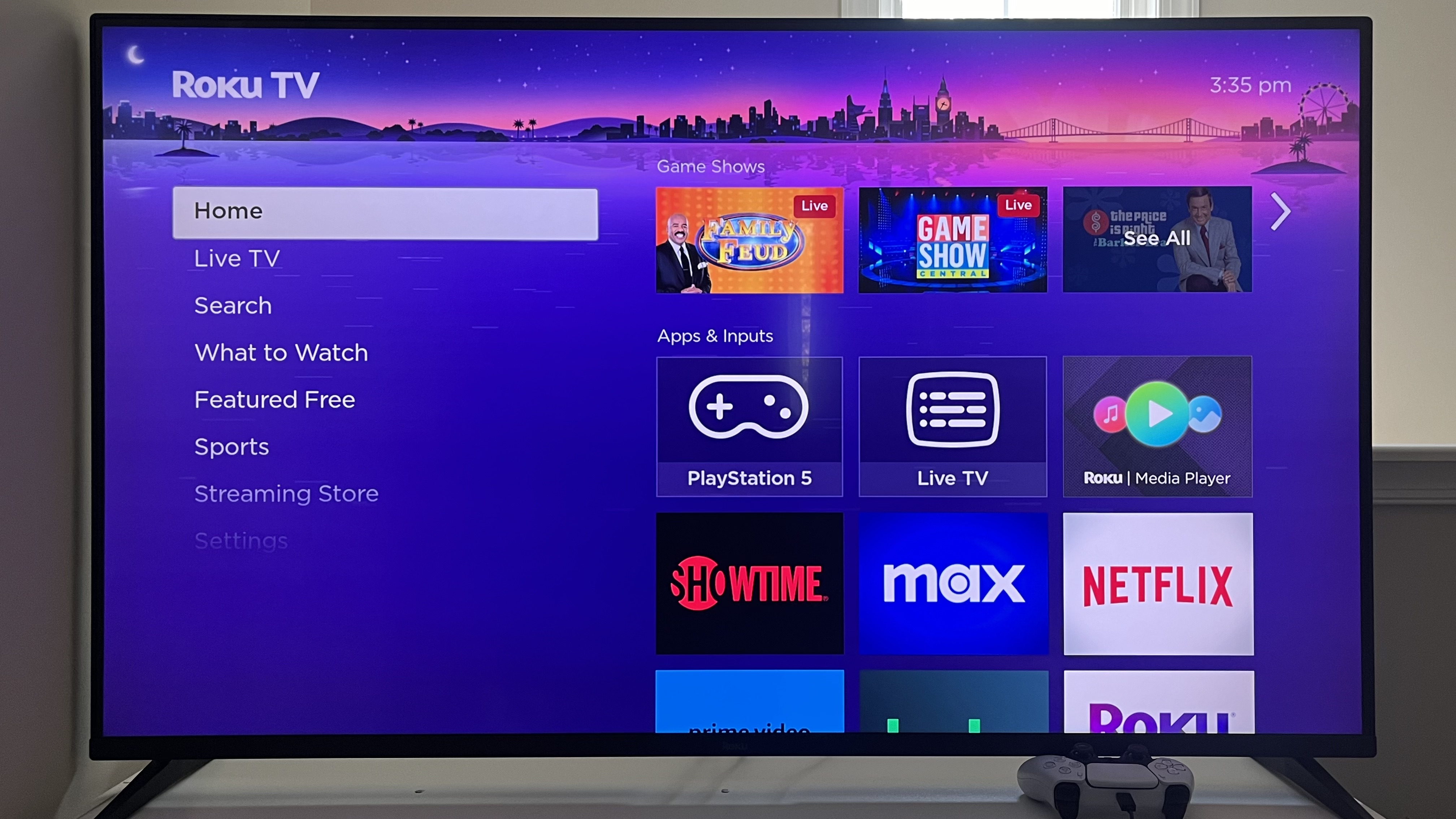
Specifications
Reasons to buy
Reasons to avoid
✅ You’re on a budget: Roku Pro Series TVs deliver impressive picture and sound quality for the money, and they even use a mini-LED backlight to boost picture brightness and contrast.oney, but there are much better options available if you can spend extra.
✅ You want a great smart TV interface: Roku has one of the best smart TV interfaces around, offering easy, intuitive navigation with significantly less screen clutter than its competitors.
❌ You crave brightness: Despite having a mini-LED backlight, the Pro Series manages only average picture brightness compared to its mini-LED TV competition.
❌You crave bass: While we gave the Pro Series high marks for overall sound quality when we reviewed it, other TVs in this guide deliver better built-in bass.
The Roku Pro Series is the company’s flagship TV lineup and one that uses a mini-LED backlight to boost picture brightness and contrast to a higher level than the mid-range Roku Select series TVs. Notably, the Pro Series sets feature a thicker shadowbox-style design that allows for bigger built-in speakers that are side-firing rather than the downward-firing ones found in many TVs, the Select series included.
When describing the TV’s sound quality in our Roku Pro Series TV review, we said “Details in the high frequencies retain body as well as clarity,” and that “mids are nice and full.” About the only thing we felt was missing was bass, and that can be easily – and inexpensively – fixed by adding one of the company’s wireless subwoofers to the TV. (Roku wireless surround sound speakers that link up with Roku TVs are also available.)
Other than sound, Pro Series TVs use the same streamlined smart interface found in the company’s streaming devices. The TV’s Voice Remote Pro has a backlit keypad and a hands-free option that lets you control the TV using voice commands without having to touch the remote. A Smart Picture feature can automatically optimize the picture settings based on what your viewing, and the TV’s two HDMI 2.1 ports support 4K 120Hz input for gaming.
One of the best things about the Roku Pro Series is its price, which is very affordable for a TV this feature-packed. Add in the fact that the Pro Series’ impressive sound quality means you don’t necessarily need to buy a soundbar, and its value increases even further.
Read our full Roku Pro Series review
The best premium mini-LED TV for sound
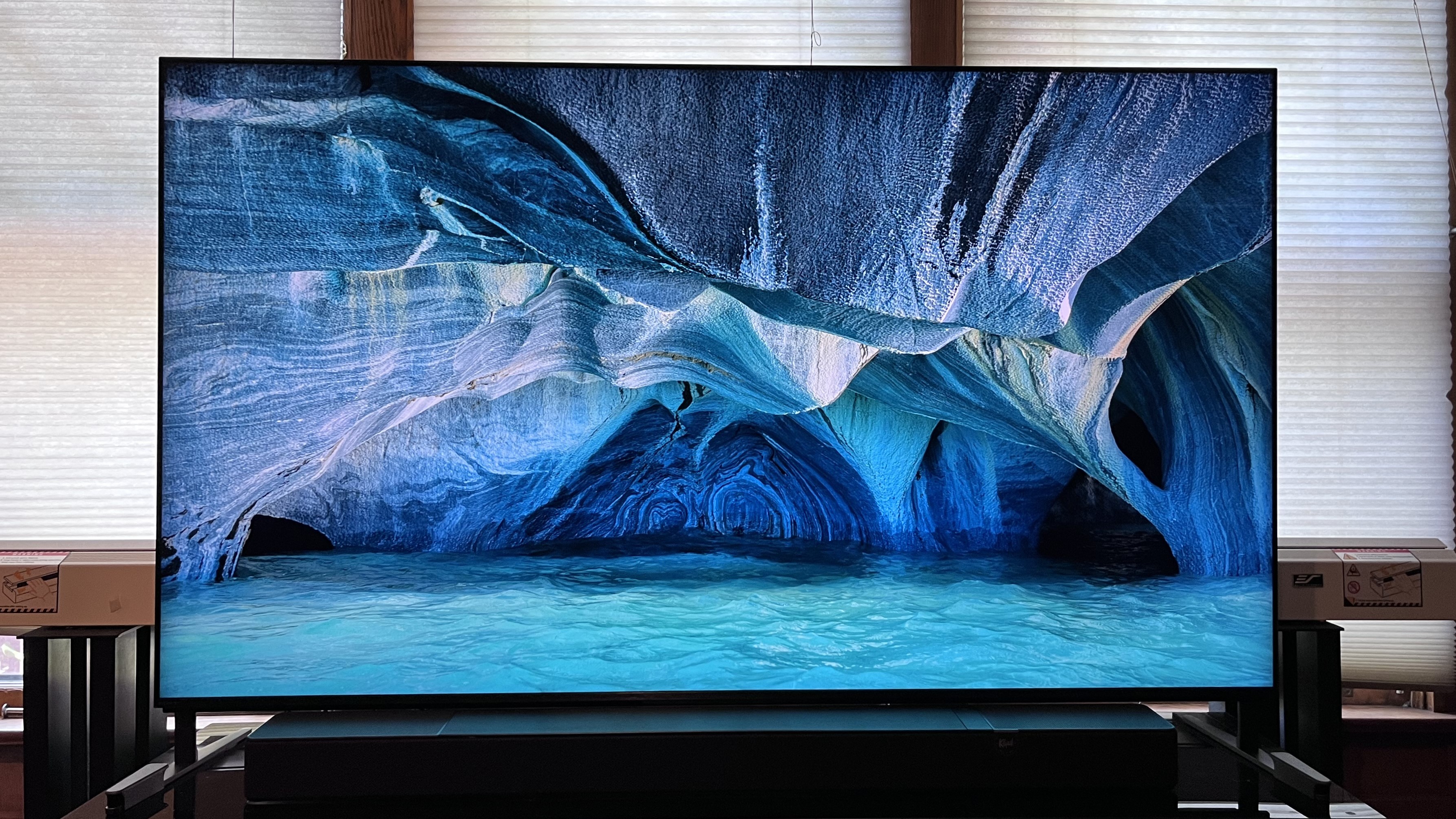
Specifications
Reasons to buy
Reasons to avoid
✅ You’re on a budget: Roku Pro Series TVs deliver impressive picture and sound quality for the money, and they even use a mini-LED backlight to boost picture brightness and contrast.oney, but there are much better options available if you can spend extra.
✅ You want a great smart TV interface: Roku has one of the best smart TV interfaces around, offering easy, intuitive navigation with significantly less screen clutter than its competitors.
❌ You want the best possible picture: We gave the Bravia 9 five stars for picture quality in our review, citing its high brightness, rich color, and exceptional shadow detail.
❌You own a Sony soundbar or speakers: When used with a Sony soundbar or wireless speakers, the Bravia 0’s Acoustic Center Sync feature lets the TV’s built-in audio system be used as a center channel speaker.
The Sony Bravia 9’s Acoustic Multi Audio+ design solves the problem of disconnected TV sound by using tweeters installed in the left and right sides of the TV’s frame. These work to elevate dialogue so it sounds like it’s coming directly from the mouths of characters talking onscreen, and they also make the positioning of sound effects accurate and natural. And in contrast to the virtual Dolby Atmos processing used by most TVs, the Bravia 9 has 'Beam' drivers located on top that create a real sense of spaciousness by bouncing sound off your room’s ceiling.
The Bravia 9’s 2.2.2-channel speaker system is powered by 70 watts of amplification, and supports Dolby Atmos and DTS:X immersive soundtracks. 3D Surround Upscaling adds spaciousness to regular stereo or mono soundtracks, and a feature called Voice Zoom 3 uses AI to isolate dialogue and boost it separately to enhance the clarity of voices.
Another feature, Acoustic Center Sync, allows for a compatible Sony soundbar or speakers to be connected to the Bravia 9 so its built-in speakers can be used as the center channel in a surround sound system. When this setup is configured, Sony’s 360 Spatial Sound Mapping processing will create 'phantom' speakers between the actual ones for even greater immersion.
When we tested the Sony Bravia 9, we used Acoustic Center Sync to pair the TV with a Sony Bravia Home Theater Quad wireless speaker system, creating a 5.1.4-channel configuration. The result: “the Bravia 9 integrated perfectly with the external audio system, delivering smooth and seamless sound.”
On the picture quality front, the Sony Bravia 9 is a flagship mini-LED TV and exclusively features the company’s XR Backlight Master Drive with High Peak Luminance tech to deliver pictures with high peak brightness and refined local dimming for detailed blacks. It also has an anti-reflection screen, making it a great option for both movies and sports, and it supports 4K 120Hz for gaming on two HDMI 2.1 ports.
Read our full Sony Bravia 9 review
The best TV for sound: FAQs
How to choose the best TV for sound
If you're looking for the best TV for sound, first consider whether you need one. There are many more options available if you're willing to get a great-looking TV with mediocre sound and pair it with a soundbar or sound system instead.
However, if you have your heart set on an all-in-one package like the TVs listed above, keep your eyes peeled for a few key specifications. For example, power is important when it comes to sound. We've listed this as the number of Watts under each TV. The higher the number, the more powerful the sound. Granted, the best sound isn't always the most powerful, but it's a good indication as to whether you're going to get an immersive room-filling sound from your new TV.
The number of built-in speakers matters, too. Many TVs have 2 speakers, but the more you have, the more wide and expansive the soundstage will be. For example, the Panasonic Z95B in our list above has a 5.1.2ch speaker system for a fuller-sounding experience.
Although sound is a priority, don't overlook other important factors, too. Ensure that the picture quality is going to work well in your living room. For example, some TVs work better in bright light environments than others. And, of course, be sure to measure your space first to check you have room for your new display.
What's the best sound quality in a TV?
DTS:X and Dolby Atmos are the main home cinema audio formats. These rival technologies are both audio compression technologies that create a surround sound effect both in cinemas and in the home.
So which is better? Opinion is divided. DTS:X is encoded in a higher bitrate so should technically be better quality audio. But Atmos claims to be more advanced, and capable of producing a higher quality sound at a lower bitrate. As is often the case, it comes down to personal taste.
Atmos is more widely supported – by Netflix and Amazon Prime Video, among others – and most modern TVs are compatible with it, whereas DTS:X requires a separate audio system.
Read more in our DTS:X vs Dolby Atmos vs DTS Play-Fi guide.
New TVs coming in 2025
Successors to some of the TVs on this list have been announced for 2025, and those models will soon be arriving in stores. We expect to post reviews of them as quickly as possible, but for now, the listings in this guide stand as our current top choices as the best TVs for sound.
The Hisense U8QG will get a substantial sound upgrade over its predecessor, jumping to a 4.1.2-channel Dolby Atmos speaker configuration over the U8N’s 2.1.2-channel array. Like the U8N, it will also support DTS:X and is IMAX Enhanced certified. With up to 5,000 nits specified peak brightness, the U8QG series is also brighter than its predecessor and will feature up to 5,600 local dimming zones.
Roku Pro series TVs will also be getting an update in 2025, with the new models getting custom factory calibration to ensure best performance. Roku didn’t provide any information about sound upgrades to the Pro Series, which remains our top budget choice (US) in this guide.
How we test the best TVs for sound
How we test the best TVs for sound
☑️ More than 2,600 TV and home theater reviews
☑️ 16 years of product testing
☑️ Over 16,000 products reviewed in total
☑️ Nearly 200,000 hours testing tech
To test the best TVs for sound, we watched a range of content on each of these displays, really listening out for some key criteria. This mostly included how the audio formats DTS:X and Dolby Atmos performed. Did they give the experience of surround sound? What was lacking? Did settings need to be adjusted considerably to get the desired effect? Did the TV deliver on the power listed in the specs?
In our reviews above, we've answered the key questions you'll need to know when considering the best TVs for sound, ensuring we tried TV shows, movies and games to let you know which might be better suited for certain kinds of content.
Although this guide is very much focused on audio specs, no one wants a TV that sounds great and looks mediocre. That's why every TV on this list has also been tested against the criteria we apply to all of our TV buying guides.
This includes rating picture quality, clarity and brightness. It also involves testing smart features, assistants and checking all of the best streaming apps work well. As well as living with the TV for some time, ensuring that all content types display well, viewing angles are good for a range of environments and much more.
We've tested hundreds of TVs over the years, which means you're in safe hands. Not only are we well equipped to pick the best TVs for sound, we also have extensive experience of the market as a whole, so can confidently select the TVs that deliver rather than relying on their specs.
Latest updates to this guide
November 16, 2025
Replaced the Panasonic Z95A as our best overall pick with the Panasonic Z95B, based on our recent testing. Also switched the Sony Bravia 8 in second place as our best mid-range OLED choice with the newer Sony Bravia 8 II.
May 9, 2025
Added 'New TVs for 2025' section to FAQ.
February 10, 2025
Added in 'Buy it if' and 'Don't buy it if' boxes for each entry to summarize pros and cons for quick reading.
Read more updates
December 16, 2024
Added Roku Pro Series as 'Best budget (US)' option.
October 16, 2024
Gave this list an overhaul with new rankings and entries. Panasonic Z95A was introduced and became 'best overall'. Sony Bravia 8 became the 'best mid-range OLED'. The Hisense U8N became the 'best mid-range mini-LED' Amazon Fire TV Omni QLED introduced and became 'best budget' and the Sony Bravia 9 became the 'best premium mini-LED'.
Also introduced 'Quick List' with short summaries for each entry at the top of the list.
August 15, 2024
Replaced Hisense U8K with newer Hisense U8N model as 'best midrange.'
June 18, 2024
Replaced Samsung S95C OLED with the Sony Bravia 9 mini-LED as 'best premium US.'
February 5, 2024
Added the Sony A80L as 'best tv for sound for most people'. Panasonic MZ2000 and Samsung S95C were introduced as 'best premium UK' and 'best premium US' respectively. Hisense U8K added as 'best mid range TV for sound'. Removed Sony X90J, Samsung Q80B, LG C2, Philips OLED+936 and Sony A95K from guide, mostly due to receding stock.
Sign up for breaking news, reviews, opinion, top tech deals, and more.

Al Griffin has been writing about and reviewing A/V tech since the days LaserDiscs roamed the earth, and was previously the editor of Sound & Vision magazine.
When not reviewing the latest and greatest gear or watching movies at home, he can usually be found out and about on a bike.
- James DavidsonTV Hardware Staff Writer, Home Entertainment